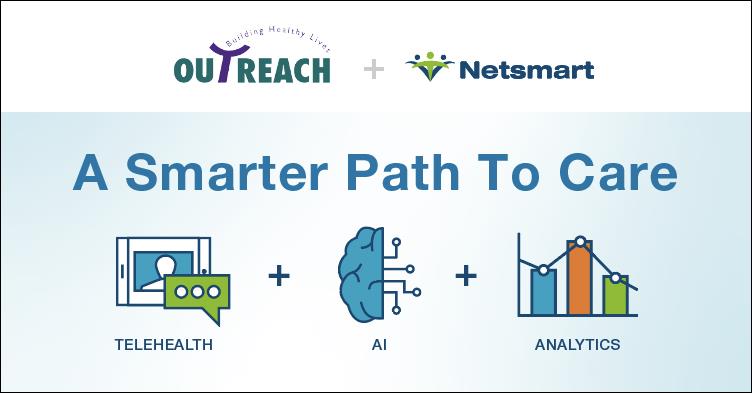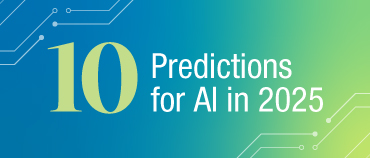Mental healthcare landscape
Now more than ever before, behavioral health is at the forefront of America's awareness. According to CD Insights, the number of news articles mentioning behavioral health from July 2016 to June 2021 has skyrocketed. From 2019 to 2021 alone, the numbers increased from 3,000 to 8,500 articles. At the same time, there continues to be a huge disparity and gap in terms of the demand for behavioral health services and the number of providers that are available to deliver those services. Not surprisingly, just about every state in the country is being designated as a mental health care professional shortage area.1
After reviewing the 2022 State of America report, I found the statistics to be overwhelming. Twenty-one percent of adults or about 50 million Americans are experiencing a mental illness. Anxiety screenings and depression screenings increased significantly, but only 40 percent received treatment.2
On the flip side, there is a silver lining; this increase in awareness and news articles related to behavioral health will perhaps lead to a decline in the stigma surrounding mental illness. With the shortage of professionals coupled with a significant increase in need for services, healthcare executives are turning to technology. Equally important, they are turning to technology partners whose focus is on Extreme Usability.
Making a great design even better with clinically informed technology
It’s more important than ever to integrate clinical and IT perspectives into a modern, easy-to-use, intuitive user experience, so provider organizations can drive processes that result in better outcomes and efficiency.
Digital Strategy 1.0 was all about the electronic health record (EHR) and telehealth, while today we are in the midst of Digital Strategy 2.0. If your organization is going to be data- and value-based care driven, your digital strategy must consist of more than just the EHR. The EHR alone will not fully meet all the 21st century healthcare demands and challenges. To promote provider engagement and satisfaction and encourage technology adoption, it is imperative that the EHR is equipped with tools that support clinical decision-making, documentation, ease of administrative burden and workflow efficiency. These tools simplify administrative and billing tasks, allowing providers to spend more time interacting with those they serve.
When I refer to Extreme Usability, I mean making a great design even better, so that healthcare technology becomes a tool to attract, engage and retain staff while maximizing reimbursement. The general use of technology is seamlessly ingrained in our daily existence; using the EHR should be no different. Mobile apps have changed almost every aspect of our life, from how we bank and shop, to how we socialize and manage our health. This widespread adoption can be attributed to ease of use and convenience. At Netsmart, we believe it is not enough for us to compare the usability and intuitiveness of our solutions with other EHRs. We need to compare our solutions with all the technology providers uses in their professional and personal lives. This means we need to make the process of writing a progress note, for example, as easy as buying something on Amazon.
Technology with user experience at the forefront
Healthcare technology platforms should be solid, scalable, easy-to-use and connected to the rest of healthcare. We fundamentally believe you won’t be successful in your worlds unless you digitize your entire enterprise. Functionality should incorporate interoperability to connect outside of your four walls, virtual care, including integrated telehealth mobility for field-based teams, workforce management including electronic visit verification (EVV), route optimization, a secure texting and capacity planning solution, mobile dispatch, consumer and family engagement and analytics.
To fully benefit from new technology, you will need a partner whose guiding principles focus on an intuitive user experience, that drives performance, scale and reliability, and puts providing care at the forefront of their solutions.
I have worked at Netsmart for eight years. One of many things I value most about our organization is that we recruit providers, clinicians, nurses, doctors, clinical directors, case managers and individuals from the human services industry to help augment our IT teams. Organizations want to know they are getting technology solutions designed by providers and clinicians for providers and clinicians.
Just as we saw an overwhelming acceptance of and increase in telehealth visits during the pandemic, today we are seeing greater acceptance and use of artificial intelligence (AI) in mental health. Providers and technology partners understand there will always be a need for human-to-human connection. AI's role in this space is to support humans, not replace them.
Giving providers time back with AI
We know the average provider spends 40 percent of their time or a total of two days per week on clinical documentation, often after 5 p.m. and on weekends when they should be with their friends and family. On average the time from session-to-note signing is over three days. This problem is not just in behavioral health; it’s across human service communities including addiction treatment, intellectual and developmental disabilities (I/DD) and child and family services. This documentation overload, coupled with the increased demand for mental health services, is leading to record levels of provider burnout and turnover.
I recently had the opportunity to present a webinar for OPEN MINDS on Extreme Usability Improving the Workforce Experience with two of our partner organizations. David West, associate director of Integrated Systems of Care, and Tera Stallard, director of application support, from Integral Care discussed the pain points and impacts of provider burnout and turnover why they turned to Bells AI Documentation Assistant, the first and only human services AI documentation tool that is smart intuitive and seamless.
The solution reduces documentation time by reducing errors and redundancy, and improving note quality, leading to fewer rejected claims, and, ultimately, increasing reimbursements. The technology also assists with staff recruitment and ensures faster onboarding.
Tera reports clinicians are completing their notes in four minutes and staff are finalizing progress notes within two hours of a session. Not only are these results powerful, but the implementation is quick and easy. "The interface to build and design the notes is very modern and easy to use," according to David West.
In addition to Integral Care results, other Netsmart partners using the AI solution report reducing documentation time by 50 percent, speeding up note writing speed by 67 percent, and finalizing progress notes by 56 percent.
Transforming care with GPS-enabled mobile dispatch technology
A second challenge organizations face is lack of visibility into all providers in the field including their availability. Tracking calls, finding resources and dispatching the appropriate provider has led to many challenges. I was joined by Cephas Silvera, CIO and health information security officer for Jewish Social Service Agency.
Organizations report this issue has increased travel time for providers and wait time for consumers. Both add up to longer wait times, scheduling problems, and dissatisfaction for staff and consumers. Mobile dispatch technology that gives basic directions has been available for many years. But as we deliver more care in community, and as the demand for services continues to rise, a mapping solution that gets you from place to place (Did I give you a flashback to printing out your MapQuest instructions?) is simply not robust enough.
We worked directly with our partners to create mobile dispatch technology that support mobile crisis calls. The goal was simple: Simplify route planning and help providers respond to requests more quickly. In other words, we needed to automate the workflow. The resulting technology solution enables faster response times by assigning the closest caregiver to each request. We use GPS and real-time location of all providers to make assigning the most efficient routes easy. Care providers can reduce travel time and improve access to critical info at the point of care, reducing wait time for consumers, increasing satisfaction with service and boosting staff satisfaction. Automating the workflows and the ability to track staff in real time lead to better outcomes, fewer hospitalizations, increased comfort of the individual and their family, and minimizes the amount of time staff spend driving. In addition, organizations are better able to extract and analyze data that was not previously captured.
The return on investment is impressive. If you have an average of 40 staff in the field at your agency (I know that number is low), and they are driving an average of 5400 miles/week to do their jobs, the savings in travel expenses per month alone can be more than $12,000. Time savings add up to six to 10 more visits monthly, which is equivalent to 240 to 400 more visits annually. Not only are organizations lowering costs, but now care providers spend less on the road and more time face-to-face time with those they care and love to serve. All in all, this technology allows you to add more visits to your caseload filling unfilled shifts increasing your reimbursement overall.
Sources:
1Bureau of Health Workforce, Health Resources and Services Administration (HRSA), U.S. Department of Health & Human Services
2MHCA Behavioral Health CEO Report and 2022 State of Mental Health in America Report









